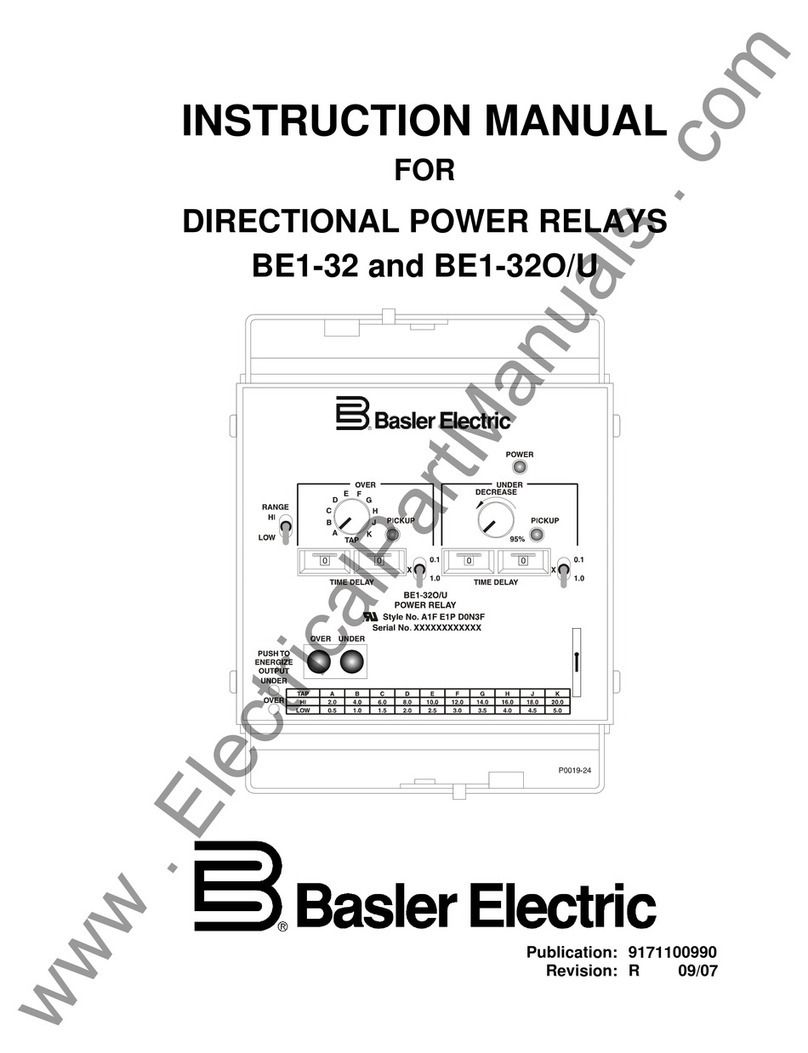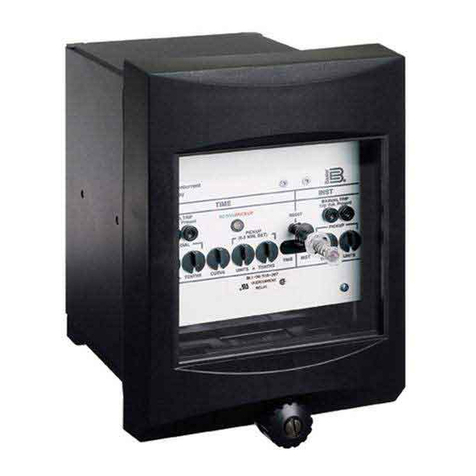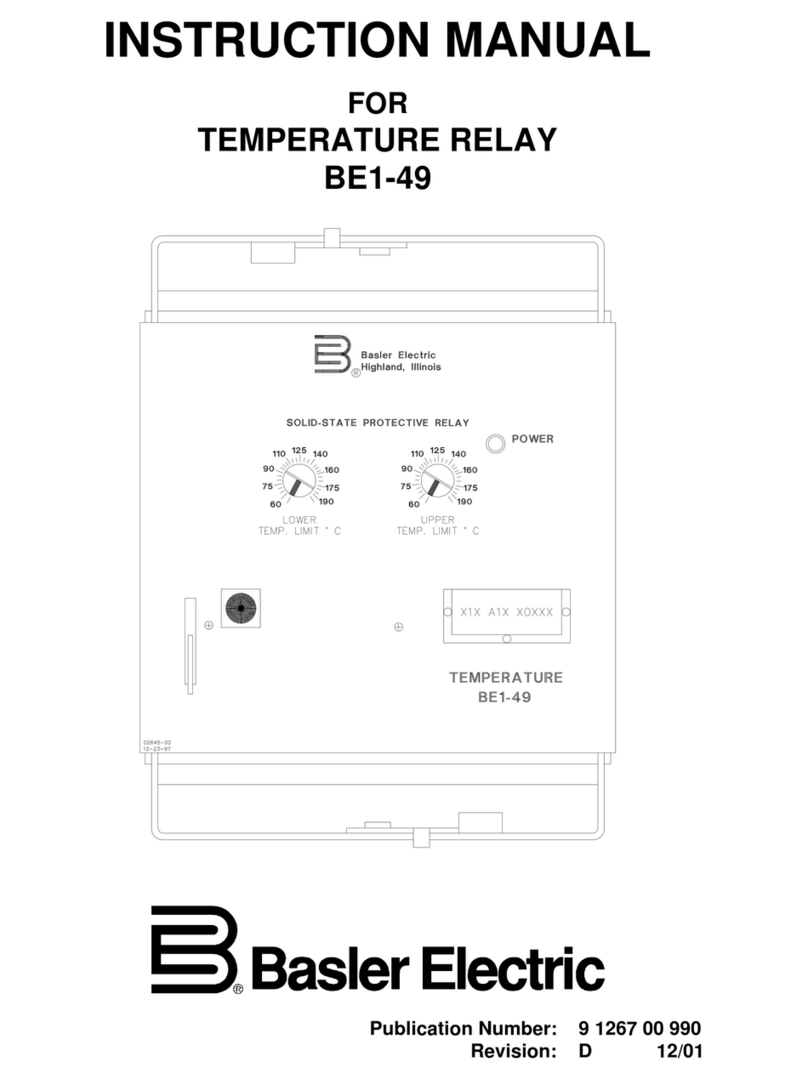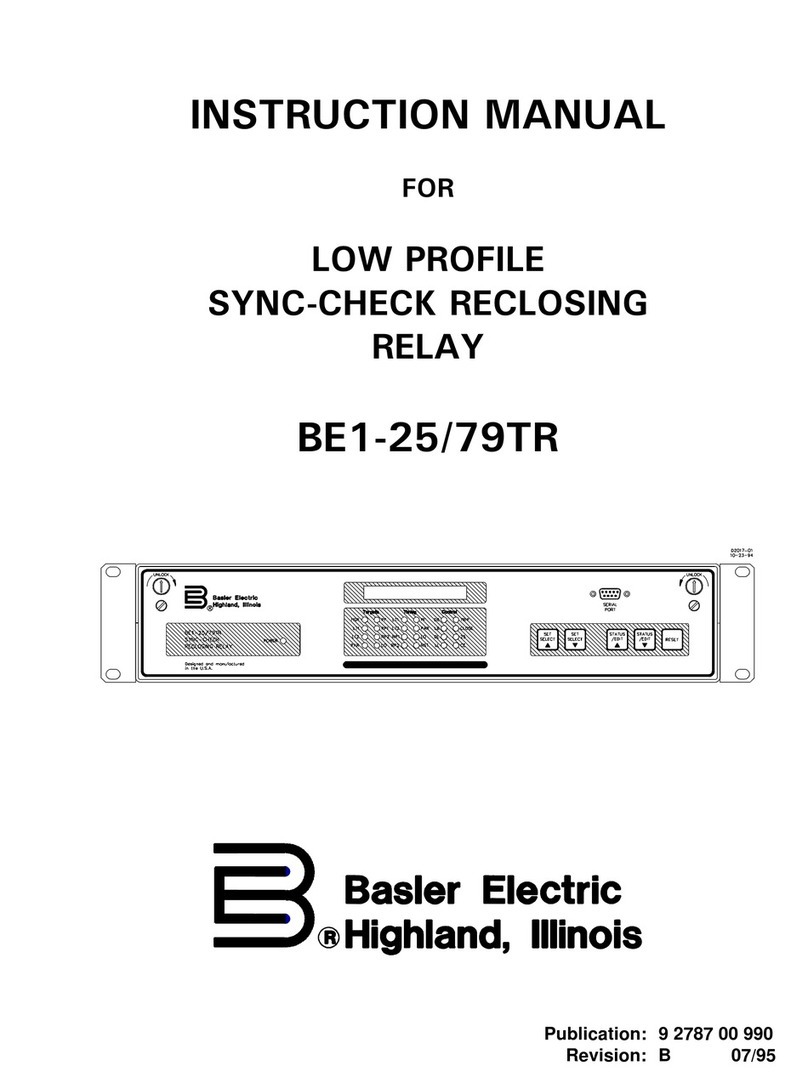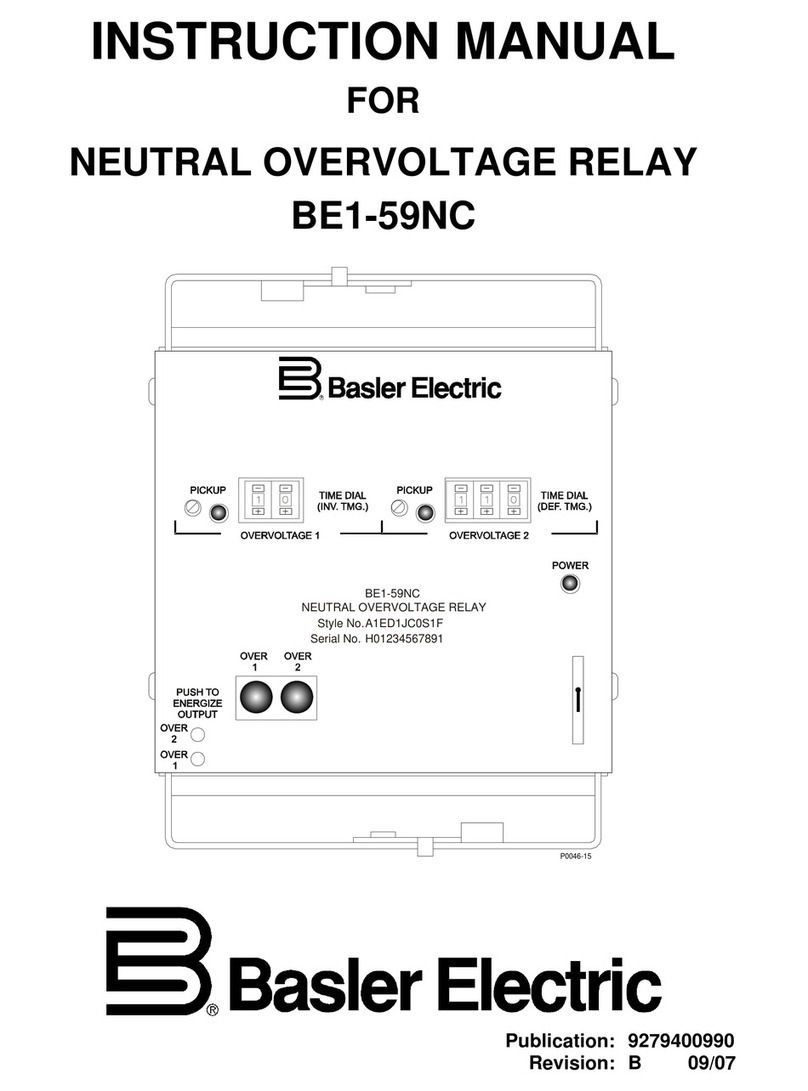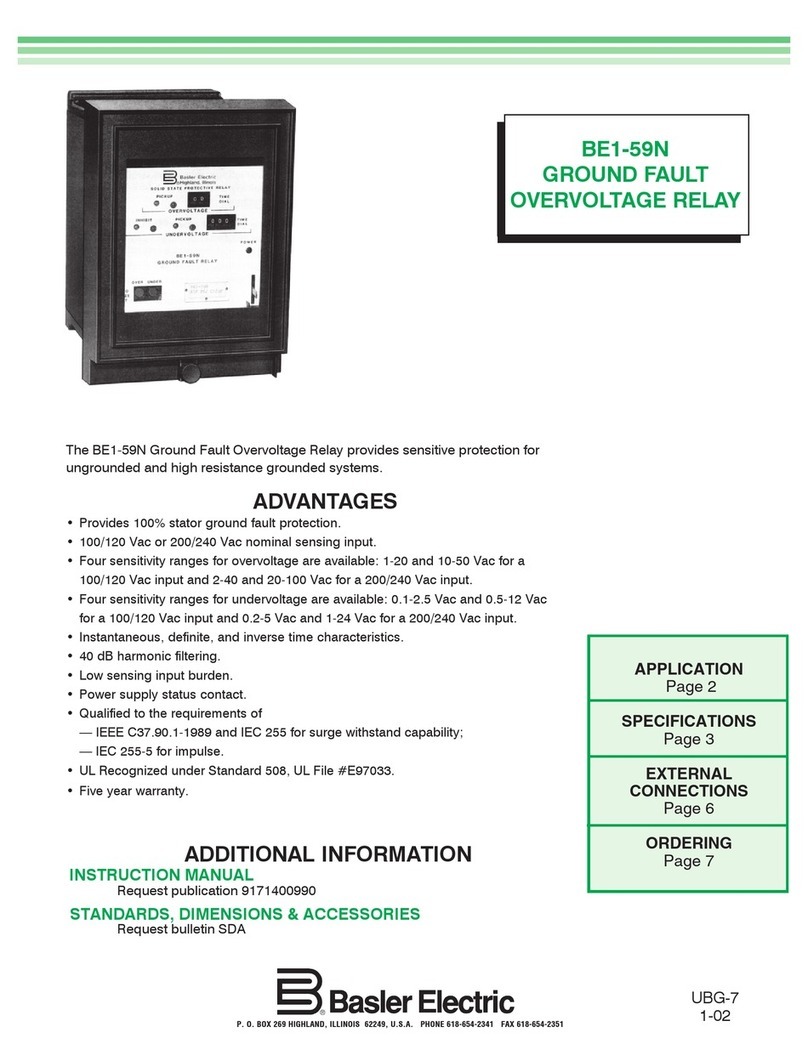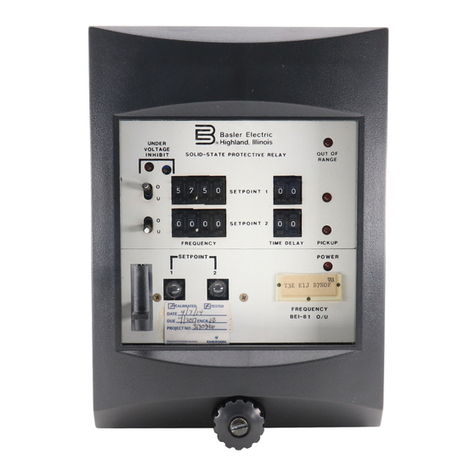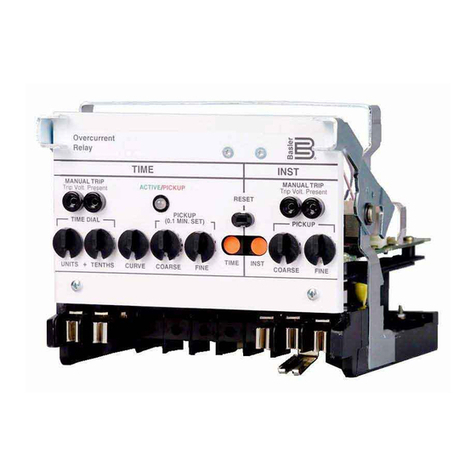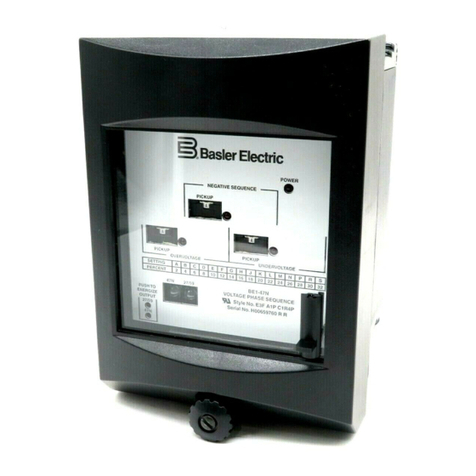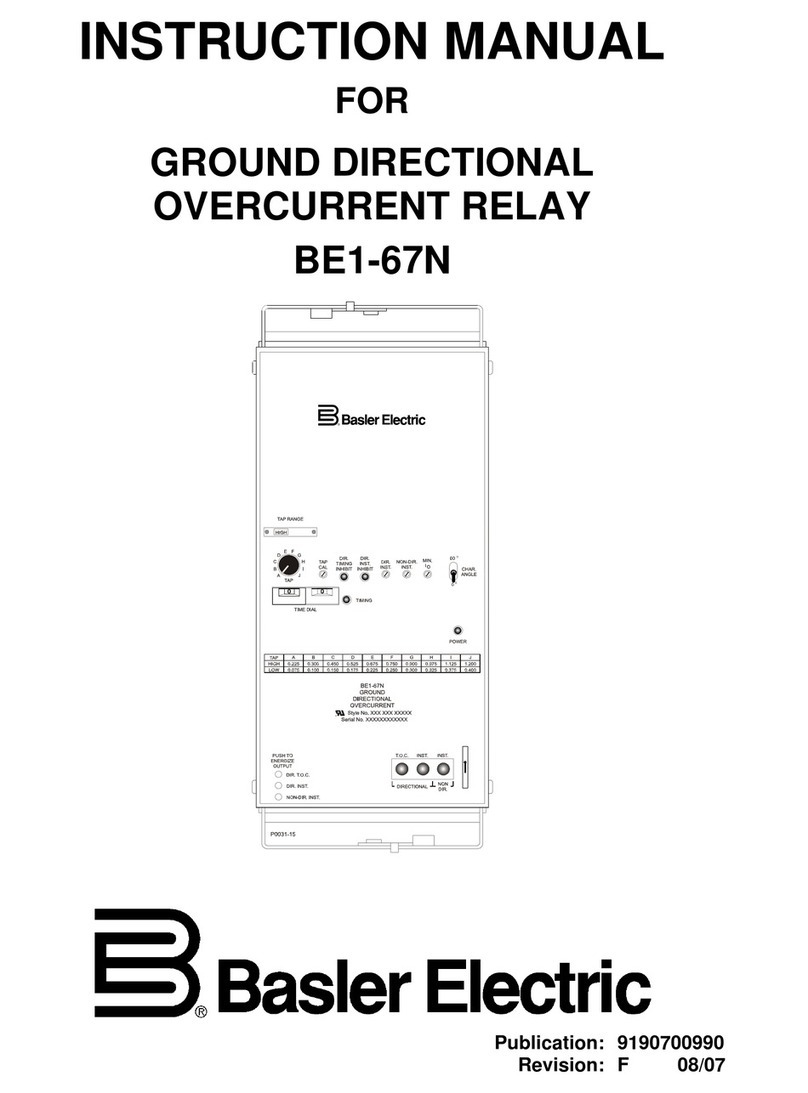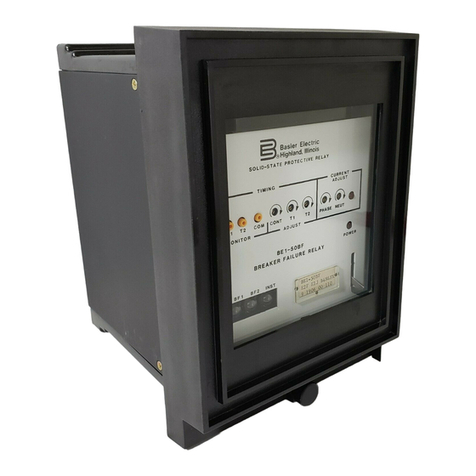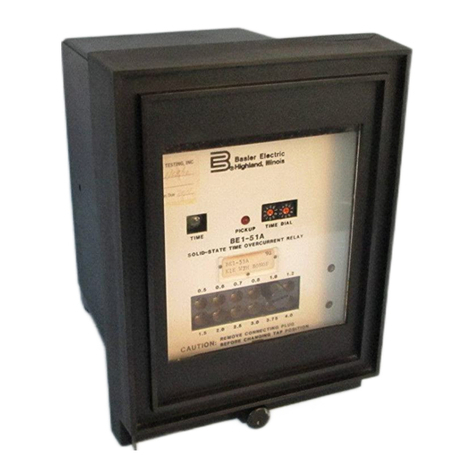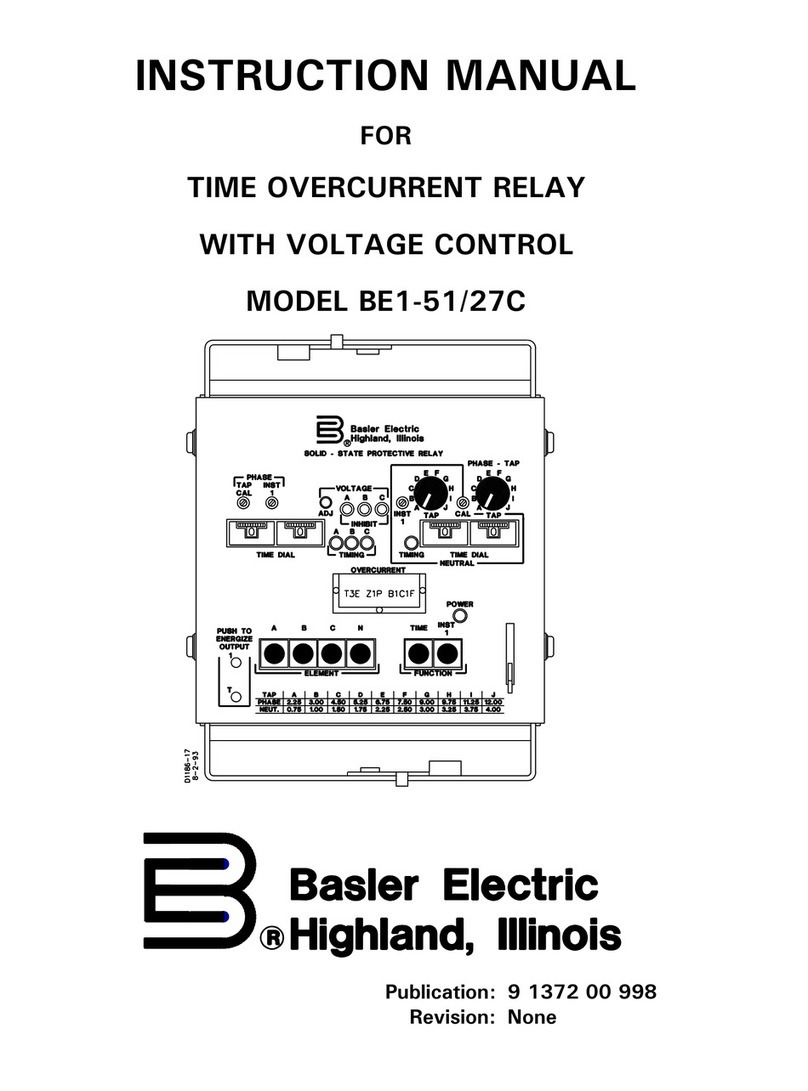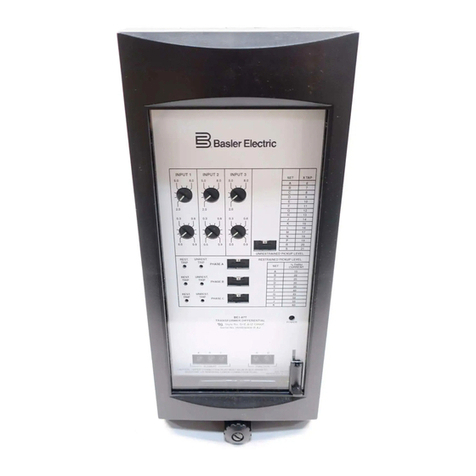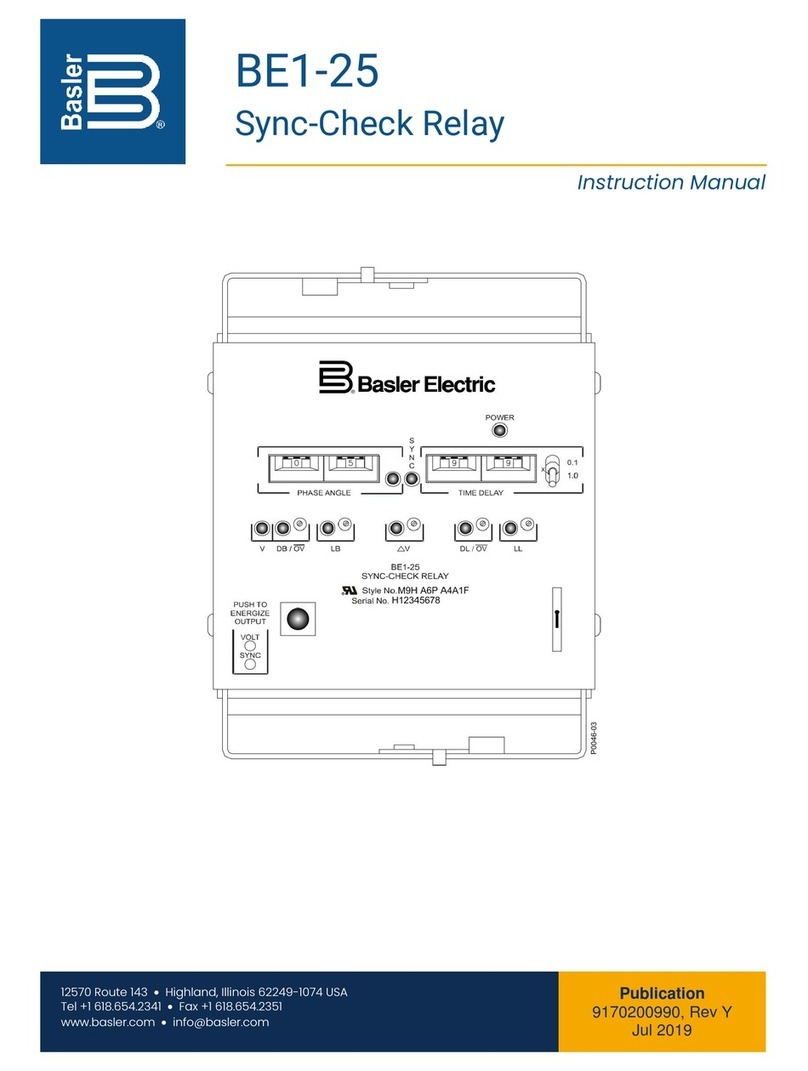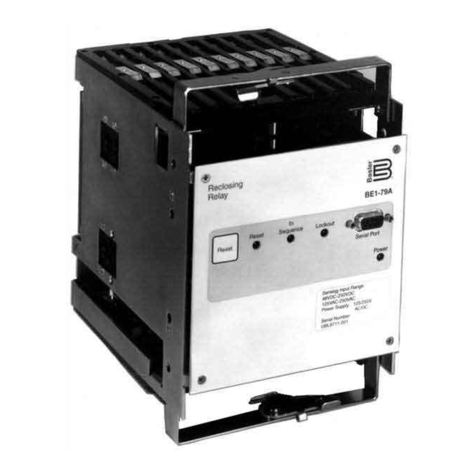
iv BE1-81O/U - Introduction
CONTENTS - Continued
Operational Test Procedure - Continued
Inverse TIME DELAY (Option D1) ............................ 5-4
Undervoltage Inhibit ....................................... 5-5
SETPOINT 2, 3, and 4 Performance Tests ...................... 5-5
Section 6 MAINTENANCE 6-1
General ................................................... 6-1
In-House Repair ............................................. 6-1
Storage ................................................... 6-1
Test Plug .................................................. 6-1
Section 7 MANUAL CHANGE INFORMATION 7-1
LIST OF ILLUSTRATIONS
Figure 1-1. Style Number Identification Chart ............................. 1-2
Figure 1-2. Inverse Time Overfrequency Characteristic Curves ............... 1-6
Figure 1-3. Inverse Time Underfrequency Characteristic Curves .............. 1-7
Figure 2-1. Location of Controls and Indicators ............................ 2-2
Figure 2-2. Location of Controls and Indicators, S1 Case .................... 2-3
Figure 2-3. Definite Time Board Switch S7 ............................... 2-4
Figure 3-1. Bandpass Filter Characteristics .............................. 3-1
Figure 3-2. BE1-81O/U Functional Block Diagram ......................... 3-2
Figure 3-3. Location of Assemblies (Typical M1 Case) ...................... 3-3
Figure 3-4. Location of Assemblies (Typical S1 Case) ...................... 3-4
Figure 4-1. S1 Case, Panel Drilling Diagram, Semi-Flush Mounting ............ 4-2
Figure 4-2. S1 Case, Outline Dimensions, Front View ...................... 4-3
Figure 4-3. S1 Case, Double-Ended, Semi-flush Mounting, Side View .......... 4-4
Figure 4-4. S1 Case, Single-Ended, Semi-flush Mounting, Side View ........... 4-5
Figure 4-5. S1 Case, Single-Ended, Semi-flush Mounting, Outline Dimensions . . . 4-6
Figure 4-6. S1 Case, Double-Ended, Projection Mounting, Panel Drilling Diagram . 4-7
Figure 4-7. S1 Case, Double-Ended, Projection Mounting, Rear View .......... 4-8
Figure 4-8. S1 Case, Double-Ended, Projection Mounting, Side View ........... 4-9
Figure 4-9. M1 Case, Semi-flush Mounting, Panel Drilling Diagram ............ 4-10
Figure 4-10. M1 Case, Outline Dimensions, Front View ...................... 4-11
Figure 4-11. M1 Case, Double-Ended, Semi-flush Mounting, Side View .......... 4-12
Figure 4-12. M1 Case, Single-Ended, Semi-flush Mounting, Side View ........... 4-13
Figure 4-13. M1 Case, Single-Ended, Projection Mounting, Panel Drilling Diagram . . 4-14
Figure 4-14. M1 Case, Single-Ended, Projection Mounting, Outline Dimensions .... 4-15
Figure 4-15. M1 Case, Double-Ended, Projection Mounting, Panel Drilling Diagram . 4-16
Figure 4-16. M1 Case, Double-Ended, Projection Mounting, Outline Dimensions . . . 4-17
Figure 4-17. M1 Case, Double-Ended, Projection Mounting, Side View .......... 4-18
Figure 4-18. Internal Connections ...................................... 4-19
Figure 4-19. DC Connections .......................................... 4-20
Figure 4-20. AC Sensing Connections ................................... 4-20
Figure 5-1. Test Setup Diagram ....................................... 5-2
